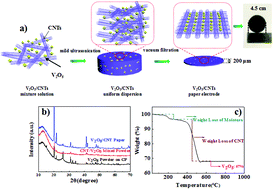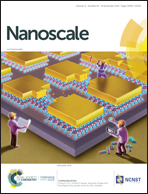Binder-free V2O5/CNT paper electrode for high rate performance zinc ion battery†
Abstract
Organic compounds, such as polyvinylidene fluoride (PVDF), have been widely used as a binder in battery electrode preparations. While such an approach does not have a significant impact on the performance of the batteries that utilize low valence ions, such as the Li ion battery (LIB), the diffusion of high valence ions (such as Zn2+) will be severely impaired. This will be especially pronounced if the polymeric binder contains highly electronegative atoms, such as fluorine. The high charge density ions, such as Zn2+, tend to adsorb onto these electronegative atoms, thus the mobility of these ions across the material is inevitably affected. As such, it becomes highly necessary to consider the binder-free electrode architecture when designing a high rate performing and cycling-stable zinc ion battery (ZIB) cathode. Herein, this work demonstrates an improved Zn ion battery by adopting a freestanding electrode. The obtained V2O5/CNT paper electrode delivers a specific capacity of 312 mA h g−1, while achieving a respectable 75% retention in capacity after increasing the current density by 10-fold. Furthermore, excellent cycling stability is recorded with 81% capacity retention after 2000 cycles at 1.0 A g−1. Thus, this work clearly demonstrated that the freestanding electrode is a promising approach for high valence ion batteries.

- This article is part of the themed collection: Nanoscale Most Popular Articles


 Please wait while we load your content...
Please wait while we load your content...